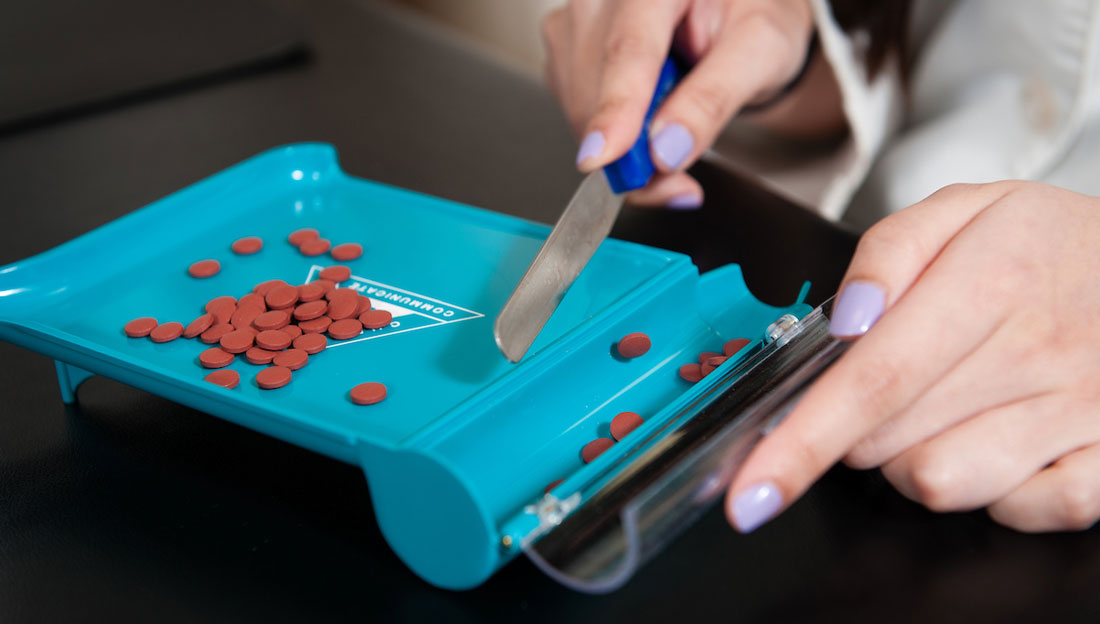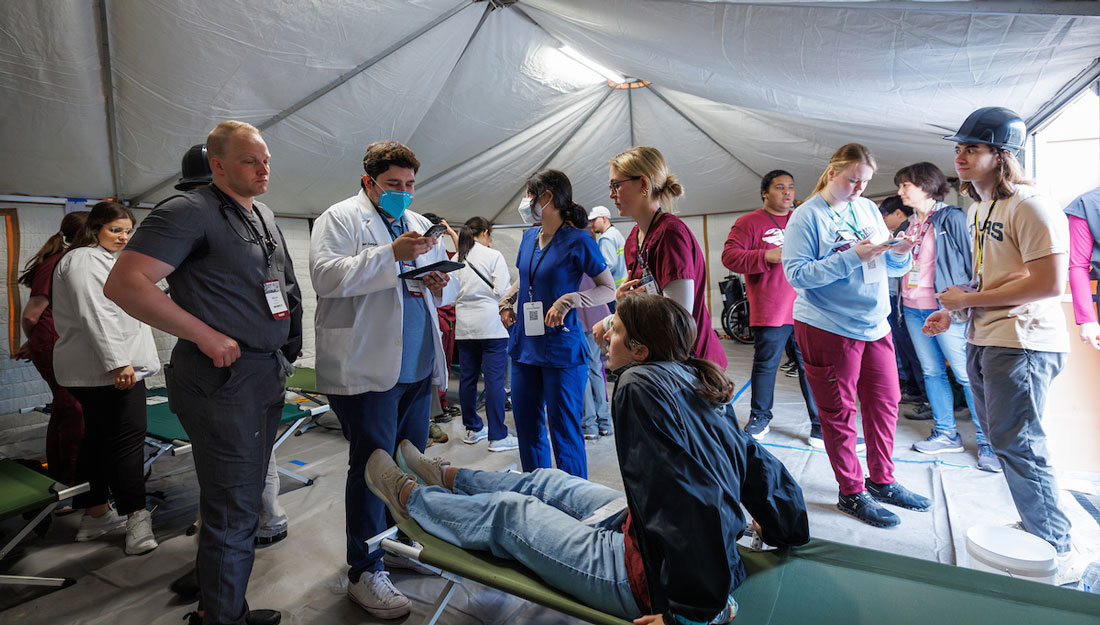Taking too many medications at once can be counterproductive (and even dangerous)

Many older adults take multiple medications to manage their various conditions. With an aging population and novel drugs entering the market every other week, it’s a problem that experts believe will only get worse without proper education to ensure safe medication use.
“Many geriatric patients are having to deal with various chronic conditions as they age, so it is very easy for them to be on five or more medications—that’s polypharmacy,” said Victoria B. Pho, PharmD, a certified geriatric pharmacist and clinical assistant professor at the Texas A&M Irma Lerma Rangel College of Pharmacy. “They might also be on various over-the-counter medications and supplements, compounding the problem.”
In fact, one study found that more than a third of older Americans do take what’s considered polypharmacy levels of medications: five or more prescription drugs at the same time.
For example, it’s common for older people who may have had a heart attack or a stroke to be on warfarin, a drug that helps prevent blood clots. In addition, as patients age, it is also very common for them to be in pain for many reasons, whether due to physical injuries or underlying medical causes like rheumatoid arthritis. A problem arises when they are on chronic therapy and then need to add over-the-counter (OTC) or prescription medications that alleviate their acute problem but that may interact with their current regimen. In this example, OTC pain relievers like aspirin or ibuprofen, called NSAIDs (non-steroidal anti-inflammatory drugs), put the patient at a high risk of bleeding when taken together with warfarin.
“It’s these medication combinations and need for chronic and self-care that worry many providers and pharmacists, but that patients might not know about,” Pho said. “For my patients on warfarin, I always recommend acetaminophen for pain, with a caution that acetaminophen can also affect the liver and also cause bleeding risks. To ensure safety, I always remind my patients to take it only as needed and as little as possible.” A common clinical tip in geriatric care, Pho said, is “start low and go slow.” Taking a low dose may be more complicated than patients realize because they may not know that acetaminophen (often sold under the brand Tylenol) is in more than 600 prescription and OTC medicines.
“Together with my interns, we always remind and teach about safe use of both prescription and OTC/self-care therapy,” Pho said. “We try to empower patients to learn and understand their medical conditions and treatment regimen and risks of drug interactions with polypharmacy and recognized the importance for monitoring and follow-up.”
Taking drugs only as needed can be more difficult than one would think. Sometimes people still take drugs that were prescribed for them years ago for a chronic condition like high blood pressure or cholesterol. However, it’s possible that the condition has improved to the point where treatment is no longer necessary. Patients might not always know to ask their providers if they still need to be on all of their current medications. “In addition, due to patients’ busy life schedules, they may not realize the importance of following up with their medical providers to ensure treatment therapies were effective and to establish care with a family doctor for continuous care to stay healthy,” Pho said. “Many people just wait to go to the doctor when they are really sick or in an emergency.”
Pho sees patient education as the key to solving this problem. “Constant patient education is very important; with the complexity of patient’s multiple disease states management and polypharmacy, it’s very easy for patients to be overwhelmed and forget the important small details,” she said. “Patient education is not a one-time session: It needs to be provided continuously and repetitively. As pharmacists and community healthcare educators, I believe that is one of our privileged and most valuable roles.”
This education may also be a way of making the patient play a larger role in their own care. “I always want to try to empower my patients,” Pho said. “Health care is a team effort, but the patient is the star player.”
To that end, Pho has a number of recommendations for patients. She suggests keeping a current list of all medications either in an electronic file or in their medication bag. “The best method is the brown-bag method: bring all of your medications—including any over the counter medications, herbs, supplements and vitamins—with you to your appointments with your health care providers so they can see exactly what you are taking,” she said. This way, providers can ensure there’s no drug duplication, help discard old medication no longer needed, assess if any current medication need to be discontinued and provide appropriate refills to avoid therapy interruptions. This step is especially helpful when patients have multiple providers at different clinic or hospitals and may go to multiple pharmacies to fill their medications either for convenience or cost-saving benefits.
Pho also sees the pharmacy team as an important check in the system because they can notice a potential drug interaction and alert the physician or the nursing team, especially if different providers are prescribing different medications. “I teach my students that it is their job to be an advocate for the patient and prevent problems before they happen,” she said. “It’s our privilege to be a pharmacy educator and an advocate of preventive care.”
Indeed, preventing chronic conditions may be the best approach for preventing polypharmacy. “We have all these great medicines, but sometimes a drug isn’t going to be as effective as a non-pharmaceutical approach like exercise, a healthy diet and keeping the patient’s home environment safe to prevent falls,” Pho said. “If we can prevent polypharmacy by preventing the condition that requires the drug in the first place, that’s the best health outcome for our patients.”
When there aren’t any alternative medications and the interactions can’t be avoided and the benefits outweighs the risks, the whole medical team needs to monitor the patient very closely for adverse side effects, especially at the beginning. “Many medications require dose adjustment in the first few months the patient takes them, and some medications may need to be adjusted due to impairment of the kidney or the liver,” Pho said. “With education, we can help patients understand the importance of monitoring and that they need to be proactive in their care and reschedule if they can’t make their original appointment.”
“We can’t always avoid polypharmacy in patient care as patients age,” Pho added. “Patient education is the key to help prevent medication errors and improve patient care and outcomes.”
Resources for health care providers and/or patients:
American Geriatrics Society Foundation for Health in Aging
National Council on Aging (NCOA)
Media contact: media@tamu.edu


